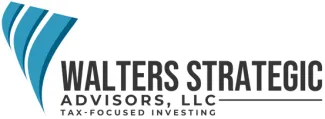
I’m 40 – Is It Too Late to Start Investing?
The surest way to build significant wealth is to start saving and investing as young as possible and stick with it. In fact, the earlier you start, the less you will need to save each month to obtain a sizeable nest egg in 40 years when it’s time to retire. Time truly is your best friend when it comes to compounding interest. Unfortunately, many Americans don’t start at such a young age, always delaying the necessary for another day or another year. Time flies by, and by the time they know it, they’re 40 plus and wondering if it’s simply too late.
We’re here to tell you that it’s not too late – in fact, today is always the best time to start investing! In this article, we’ll bring you through some sensible steps you can take to finally get yourself down the path to a successful retirement.
Establish a Budget
If you’re 40, you’re likely earning decent money, or at least better money than you did when you were 25. It’s a great chance to establish a budget, trim down unnecessary expenses, and begin putting a sizeable chunk of change into investment accounts. An excellent place to start is the 50/30/20 budgeting rule. 50% of your post-tax funds go to life’s necessities, 30% go to entertainment (this is an excellent area to start cutting back on – how many subscriptions do you have? Those can go to investing!), and 20% go to savings.
If you have high-interest debt or don’t have an emergency fund, you may want to get those out of the way first. Chances are that high-interest debt would outpace any investment returns. If an emergency does occur, the last thing you want to do is remove funds from your investment accounts as you’ll get hit with a higher tax bill, potentially face penalties, and slow down your portfolio’s performance.
Begin Investing
Start by defining your retirement goals: When do you plan to retire, and how much do you aim to have saved by then? Then, we can determine how much you should put away each month. Using our handy calculator below, we can see that if you want $1,000,000 saved up in 25 years, you’ll need to invest $753.67 per month (assuming a 10% rate of return).
However, there will be some risk to such a strategy, as you’ll want to shift to a more conservative strategy as you approach retirement to reduce your exposure to market volatility, which could see a lower rate of return on your investments. So, you may want to invest more aggressively in the first 20 years and then rebalance your portfolio in the last five years to secure your gains (assuming a 25-year timeline). That’s when things get a bit more complicated, and a financial advisor can help you determine a safe asset allocation strategy.
Avoid Stock Picking
When choosing your investments, it’s usually wise to diversify across a wide range of asset classes and not just pick a handful of stocks and hope for the best. That means purchasing ETFs, mutual funds, and a wide array of bonds across multiple industries; that way, if one asset class sinks, there’s a greater chance that others will help provide a cushion against those losses.
Don’t Overpay on Fees
Also, pay attention to the fee structures of each investment. High fees will eat away at your performance. The goal is to pay yourself, not the fund manager. If an asset seems to have high fees, say, 2%, we recommend consulting with a financial professional to confirm that asset is a good fit in your portfolio.
Establish a Tax Strategy
One of the biggest factors in a retirement plan is how you’re going to minimize your taxes as much as possible. Fortunately, the IRS provides us with ample opportunity for tax diversification. You can put money into a tax-deferred 401(K) or IRA, a post-tax Roth 401(K) or IRA, or a brokerage account. By placing the right kind of investment in the right kind of account based on their respective tax statuses, you can optimize your investments’ growth and withdraw from each account as necessary in retirement to reduce your tax liability or even reduce your tax bill to zero – more on that later.
For example, bonds generate general taxable income, meaning the returns from a bond will be taxed at your standard income tax rate, which is generally higher than capital gains tax rates, so it may make sense to put them in a Roth or tax-deferred account so you don’t experience tax drag on a yearly basis.
ETFs, with their efficient tax structures, often work well in a standard brokerage account, while mutual funds, with their higher tax burdens, can possibly be held in a Roth or tax-deferred account to avoid an annual tax bill on distributions.
These are just examples though – keep in mind that you have contribution limits to your 401(K) and/or IRA, so you’ll need to carefully consider what assets to purchase within each account.
Execute Roth Rollovers
Not every workplace retirement plan comes with a Roth component, but a Roth conversion is usually possible if you switch jobs – which most Americans do at some point. Alternatively, you can invest into a Traditional account in years you need a tax deferral and then roll into a Roth in low-tax years or years in which your assets are performing poorly, as your tax bill for the rollover could be less than what it otherwise would be. This especially makes sense if you have many years for your assets to recover. Also, once you roll over into a Roth, you can’t touch those funds for five years without paying income tax and penalties, even if you are in retirement already.
However, a rollover doesn’t always make sense. It may come with serious tax consequences, so it’s best to consult with a financial advisor and tax professional to help you make that determination. By the way, we do everything in-house at Walters Strategic Advisors!
Craft a Retirement Withdrawal Strategy
You’ve steadily invested over the years and contributed to a range of investment accounts with different tax statuses – now comes the really challenging part. How do you spend your money safely? One common strategy, well, more of a general rule of thumb, is to withdraw 4% of your assets annually, with a bump up each year to account for inflation so you can maintain your lifestyle.
At 73, you’ll have to start withdrawing from your traditional tax-deferred accounts, such as your 401(K) or IRA. It may make sense then to begin winding down those accounts before RMDs begin so you don’t get surprisingly high tax bills once they activate. At the same time, you let your Roth accounts grow unhindered so you have tax-free income later in life, or even a tax-free gift to your beneficiaries.
Another strategy is to withdraw just enough from each kind of account to stay in a lower tax bracket or even avoid taxes altogether. The status of your investments could influence your decision – for example, the assets in your traditional accounts could be down for the year, but the assets in your Roth or brokerage accounts are doing great; it may make sense to offload winning assets and give the assets in your traditional accounts time to recover.
Optimizing your social security will not just help reduce pressure on your investments but also help you keep your taxes low. Your social security is only taxable once you reach certain income thresholds, so a careful withdrawal strategy can help prevent unnecessary taxation of your social security. If you don’t integrate social security payments into your retirement plan, you could end up leaving hundreds of thousands of dollars on the table!
Have a Backup Plan
Retirement is risky, and we can’t account for every possible risk factor, so remain flexible. If you’ve begun investing later in life, you may have to consider extending your working career to help mitigate the traditional retirement risks of market volatility and inflation. You may even want to consider annuities for guaranteed fixed-income payments later in life if you feel your investments won’t last as long as you plan on living. But be careful – they can also come with high fees, and they’re not suitable for every retiree.
In Conclusion
Is it too late to start investing at 40 or even beyond? It’s never too late. You’ll just have to try a bit harder, buckle down a bit more, and save a lot more to achieve your retirement goals. But it’s not impossible, especially with a financial advisor at your side. We’ve helped many clients begin planning later in life for a successful retirement, even when they thought it was too late. So, if you want to get the ball rolling on your money working for you instead of you working for your money, reach out today by clicking the button below!

